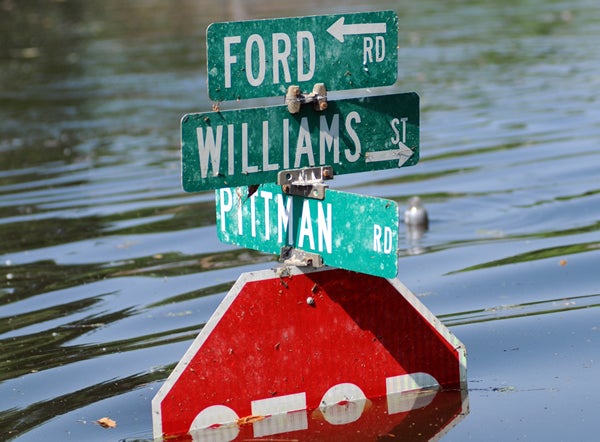We’ve discussed earthquakes and Hurricane Irene bearing down on the East Coast, but it doesn’t stop there. One disaster that frequently accompanies the storm surge created by hurricanes and the accompanying heavy rains is floods.
A flood occurs when water inundates or overflows land that is normally dry. This definition does not include tsunamis and storm surges. Floods can result from many causes, including torrential rains and dam and levee breaks. They can occur suddenly or due to conditions built up over days, meaning advance warning is sometimes possible.
Floods are categorized by how likely they are in a given time period. For example, 1:25 means once in 25 years, while 1:50 means that there is an expectation that at least once every 50 years a flood will occur. Likewise, 1:100 means there is a 1 percent chance of a flood in any given year. Statistically, however, it is possible to have the associated level of flooding more than once in that time period. These categories are compiled through historical analysis to determine flood-prone areas and also reflect the severity of the threat.
Flooding is a common hazard across the United States. Inland flooding is most prevalent in California and Oregon, the Gulf states, the northeast, and Indiana, Missouri, and Illinois. Some flooding is seasonal, but inland flooding can happen any time of year.
The actual deluge from a flooding event is the most common hazard in these disasters, resulting in deaths by drowning. Most people who die in floods are victims of flash floods, which occur with little or no warning. The sweep of fast-moving water can also create damage to buildings and other infrastructure or displace materials that become hazardous. Flooding can release hazardous materials, such as overflowing a sewage treatment plant. Organic contamination from floodwater can spread disease. On average in the United States, over 140 people are killed in floods each year, and these disasters inflict $6 billion in damage (though the level of damage and causalities can vary significantly from year to year).
Evacuations can be a key, if early warning permits. Sheltering of displaced persons and search and rescue are frequently required. Depending on the scale of flooding and the nature of damage to infrastructure, other response assets may be required.
Local, state, and federal governments all play a part in managing and responding to flood hazards. National Guard assets are frequently deployed. The Federal Emergency Management Agency (FEMA) plays a pivotal role coordinating federal disaster assistance. In addition, the U.S. Army Corps of Engineers runs the National Flood Risk Management Program, which manages and updates information on flood-prone areas; integrates damage and hazard reduction projects across local, state, and federal levels; and inspects over 13,000 miles of levees around the country. When there is an imminent threat and states request assistance, the corps provides emergency response, including technical engineering advice, sandbags and pumps, and emergency levees. Geospatial information is also vitally important in directing flood response.
The most damaging floods in the United States have resulted from torrential rains caused by hurricanes that inundate waterways. Hurricane Ivan, for example, struck the Florida panhandle and the coast of Alabama in 2004, inflicting $18 billion in damage, much of it caused by flooding. In contrast, the “Great Flood of 1993,” one of the largest in the nation’s history, was the result not of a single weather event but rather an accumulation of unusual precipitation. As a result of the storm, FEMA provided assistance in over 500 counties in nine states, with most damage in Iowa, Illinois, and Missouri. The flooding killed 47, forced the evacuation of over 74,000, and caused more than $15 billion of property damage.
FEMA provides general guidance for what to do before, during, and after a hurricane. States also provide information on their emergency management Web sites. FEMA also provides an index with contact information on state agencies.
No matter what happens this weekend for sure in Irene’s wake, there will be calls urging Congress to adopt a catastrophic hurricane fund, which, like the bankrupt and highly inefficient National Flood Insurance Program, would provide government insurance to homeowners and businesses to protect against the next catastrophic hurricane. It was a bad idea when it was proposed after Hurricane Katrina, and it is still a dumb idea. Let’s sort that little fact out before the storm gets here.





























